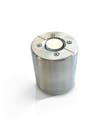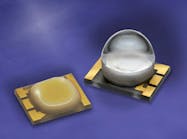United Lens Company offers custom hand molding services for the optical industry. The molding process continues to be valuable and essential to today’s optics. As long as there is light, we will have optics, and as long as we have optics, traditional hand molding will continue to be a viable option for manufacturing. Today’s designs are calling for interesting and complex optics requirements. They demand tighter specs, exotic glass types, and fast deliveries for prototyping. ULC believes that meeting this requirements begins at the raw material level.A molded blank is a blank whose basic surface curves are attained by heating and forming a given weight of raw glass; a rough glass blank resembling the finished lens in size and shape. After molding, a precision lens blank must be fine annealed to eliminate strain and to restore refractive index to its stable maximum value. The first step in ULC’s molding process is to attain the appropriate gram weight to yield the molded blank from raw material. The glass is then prepared to be put into the furnace. The glass is then cooked to its softening point. Each type of glass has a different softening point, requiring different heats and times to allow for the ideal change of state.ULC’s skilled molders prepare the glass to a malleable consistency, and then proceed with pressing the glass with a pneumatic punch and cooling it momentarily to maintain shape prior to removal from the tool. The final step in the process is annealing, a procedure in which the glass is heated to just below its transformation temperature and brought down slowly. All annealing and quality assurance is then performed in-house before delivering a product to our customer.
April 7, 2025




